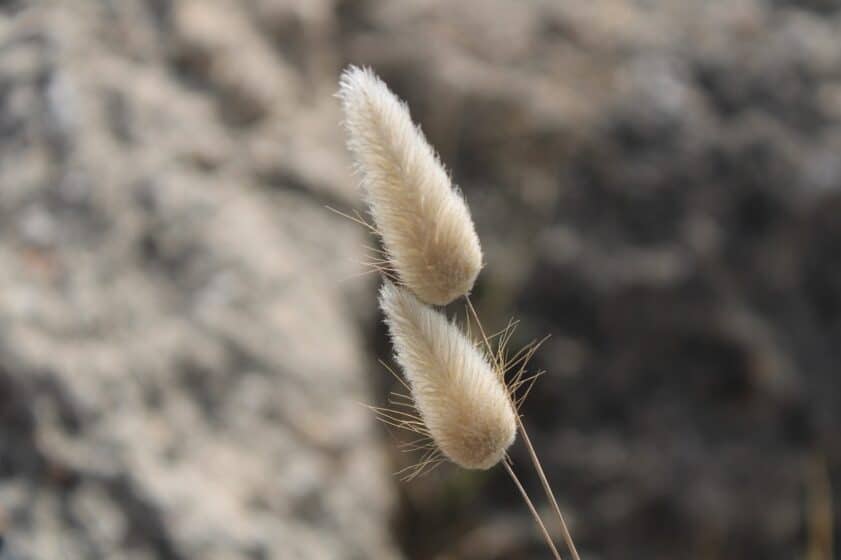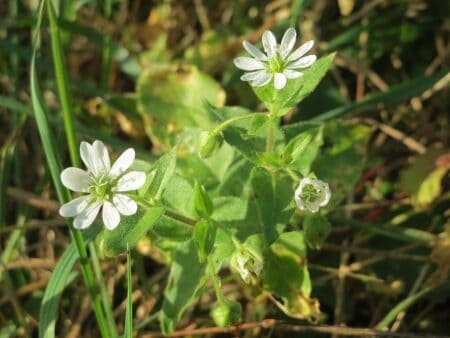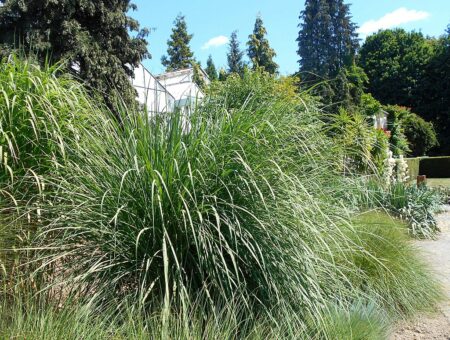Bunny tail grass, with its charming feathery plumes that dance in the wind, will bring a sense of joy and magic to your garden.
You can learn the secrets to cultivating these delightful companions and awakening their spirits in just a few simple steps.
In this guide, we’ll explore how to provide the perfect living conditions for your new fluffy friends and coax them to share their cheerfulness.
So roll up your sleeves, grab your gardening tools, and prepare to discover the timeless pleasure of growing bunny tail grass and welcoming a little hop and flutter into your outdoor space.
What Is Bunny Tail Grass?
Bunny tail grass, also known by its scientific name Lagurus ovatus, is believed to originate from Mediterranean regions but is found growing wild in parts of Europe and Asia as an ornamental grass in gardens.
Its common name is derived from its fluffy seed heads resembling a bunny’s tail.
Bunny tail grass is primarily cultivated as an ornamental grass for its delicate foliage and airy seed heads that provide visual appeal, texture, and interest in gardens.
It typically grows 12 to 24 inches (30-60 cm) tall and forms dense clumps of bright green leaves, creating a visually stunning display.
The silvery seed heads emerge in early summer and persist into winter when they turn golden brown.
Throughout history, the seeds and leaves of bunny tail grass have been used for various medicinal purposes to treat conditions like edema, jaundice, and menstrual pain.
Growing and Caring for Bunny Tail Grass

Here’s how to grow and care for bunny tail grass.
Seed Collection
To collect bunny tail grass seeds, wait until the seed heads have matured and turned pale, golden.
Gently shake the seed heads over a container to release the seeds and remove any debris or chaff from the collected seeds.
Preparing the Planting Area
Choose a location that receives full sunlight, as bunny tail grass thrives in bright, sunny conditions, and ensure the soil is well-draining to prevent waterlogging, which may lead to root rot and other issues.
Sowing the Seeds
The best time to sow bunny tail grass seeds is in early spring, after the last frost date and when the soil has warmed up.
Scatter the seeds evenly over the prepared soil, aiming for a natural and dispersed distribution.
The seeds of bunny tail grass are tiny, so avoid burying them too deep.
Watering
Keep the soil consistently moist during germination to help the seeds sprout successfully.
Avoid overwatering, which may lead to rot, and also avoid letting the soil dry out completely.
Fertilization
Bunny tail grass is a relatively low-maintenance plant and usually doesn’t require heavy fertilization.
However, you can apply a balanced, slow-release fertilizer in the spring to provide the necessary nutrients for healthy growth.
Pruning and Maintenance
Bunny tail grass is generally low-growing and compact, but some stems may become damaged or untidy.
To maintain a neat appearance, carefully trim the damaged or untidy parts of the plant using clean, sharp scissors or pruning shears.
Indoor Cultivation
Bunny tail grass can also be grown indoors in containers or pots.
Choose a pot with good drainage and fill it with a well-draining potting mix.
Place the potted bunny tail grass near a bright window where it can receive at least 6 to 8 hours of sunlight daily.
Rotate the pot periodically to ensure even growth as the plant leans toward the light source.
Bunny tail grass holds cultural significance, symbolizing innocence, playfulness, and joy.
How Tall Is Bunny Tail Grass?

Bunny tail grass, also known by the scientific name Lagurus ovatus, typically grows to a height between 12 and 24 inches.
The grass can reach 18 to 20 inches (30-35 cm) during its peak growth period in early summer when the seed heads are developing.
While individual varieties have not been formally classified or named, some informal sources refer to varieties that may grow slightly taller than the average range, up to around 30 inches (90 cm).
However, most varieties of bunny tail grass conform to the general height range of 12 to 24 inches (30-60 cm).
The grass stays relatively low and fine-textured, contributing to its ornamental appeal in gardens and borders.
Possible Problems of Bunny Tail Grass
Here are some potential problems you might face when growing bunny tail grass.
Watering Issues
Bunny tail grass prefers well-draining soil, and overwatering can lead to root rot and other water-related issues.
So Avoiding waterlogged conditions is essential.
Likewise, while bunny tail grass is somewhat drought-tolerant, consistently dry conditions can stress the plant and cause the tips of the grass to turn brown.
Pests
Though uncommon, bunny tail grass may attract pests such as aphids, grasshoppers, or spider mites.
Check for any signs of pest activity and use insecticidal soaps, neem oil, horticultural oil, or alcohol spray if infestations occur.
Diseases
Bunny tail grass is relatively resistant to diseases, but excessive moisture or poor air circulation can lead to fungal issues like powdery mildew.
Proper spacing and good ventilation can help prevent these problems.
Environmental Stress
Extreme heat, cold, or prolonged exposure to strong winds can stress bunny tail grass, affecting its growth and appearance.
Providing protection or moving potted plants indoors during severe conditions can be helpful.
Conclusion
Bunny tail grass brings simple pleasures to any garden with its charming spirited form and carefree spreading habit.
Its ease of cultivation and versatility have made it a beloved addition to gardens and landscapes worldwide.
So, embrace the whimsy of bunny tail grass, and delightfully let your green spaces bloom!
















